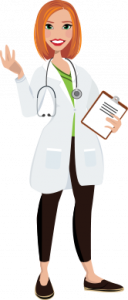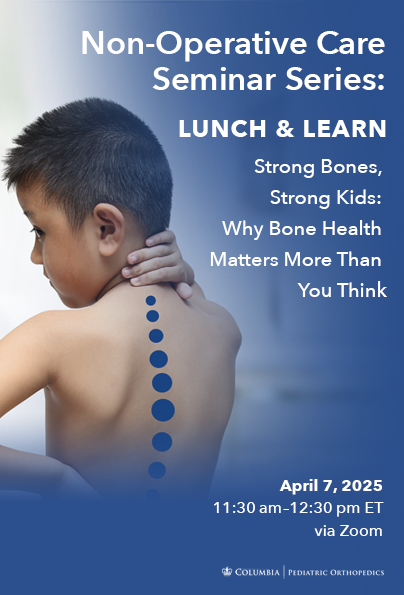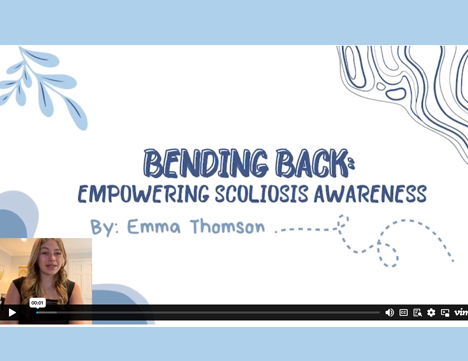Patient Cases
CASE SEARCHING NOTE: Click a yellow button, above, to look at specific type of case. Click “Browse All Cases” to return to viewing all of the case types.
You may click on any of the blue links under the patient names to search for a particular diagnosis, treatment or disease.

Emma T. | Adolescent Idiopathic Scoliosis
This is a 14 year old with Adolescent Idiopathic Scoliosis. She was diagnosed with a surgical curve and they decided to move forward with surgery. She has a family history of scoliosis with her aunt having scoliosis surgery as well. Preoperatively, she had a main right thoracic curve of 50 degrees with an upper thoracic curve of 23 degrees and ...
MORE >

Anonymous 18 | Lenke Type 5, Adolescent Idiopathic Scoliosis
This is a 14-year-old girl who first saw Dr. Vitale when she was 12 years old. Her thoracic curve was 42 degrees, and her lumbar curve was 75 degrees. When the major curve is lumbar and the thoracic curve is “non-structural,” this case of Idiopathic Scoliosis is called a “Lenke Type 5 Scoliosis.” Due to the size of her lumbar ...
MORE >

Anonymous 17 | Syndromic Scoliosis
Familial Dysautonomia, Scoliosis Bracing, Selective Thoracic Posterior Spinal Fusion, Spinal Fusion, Syndromic Scoliosis
This is a 19 year old teenage girl who has syndromic scoliosis secondary to familial dysautonomia. She was first diagnosed with familial dysautonomia at the age of 3. She first saw Dr. Vitale when she was 11 years old. At first visit, she had a thoracic curve of 37 degrees and so a brace was prescribed for her. However, her ...
MORE >

Anonymous 16 | Adolescent Idiopathic Scoliosis, Lumbar AVBT
This patient is now a 14 year old who first saw Dr. Vitale when she was 12 years old. At that time, she had a 43 degree thoracic curve and a 57 degree lumbar curve. The family was given options and risks and benefits of a fusion versus AVBT. The family decided to proceed forward with a lumbar AVBT. This ...
MORE >

Anonymous 15 | Osteoid Osteoma
This is a 13 year old boy who came to see Dr. Vitale for back pain. He was referred to Dr. Vitale by another orthopedic surgeon. The pain had been going on for a year and getting worse. This was worked out by an MRI which recommended a CT to further identify an area of suspicion.
After he had the CT ...
MORE >

Anonymous 14 | Neuromuscular Scoliosis
This is a 14 year old boy who was diagnosed with neuromuscular scoliosis secondary to GMFCS IV Cerebral Palsy. At baseline, he uses a motorized wheelchair to ambulate. He has been followed by Dr. Vitale since he was 10 years old. At that time, he had a 20 degree lumbar curve. Therefore, he was at first treated with a brace. ...
MORE >

Zion R. | Congenital Scoliosis
This is a 16-year-old who was born with a condition called congenital scoliosis, which means he had abnormalities in his spine that caused it to curve. In addition to his scoliosis, he also had significant issues with the vessels and valves of his heart that eventually caused it to start failing. To fix his heart condition, he underwent a complete ...
MORE >

Gabriella L. | Neuromuscular Scoliosis; Cerebral Palsy
Gabriella is a 14 year old who we met for the first time when she was 13. At that first visit, she was diagnosed with neuromuscular scoliosis with a 62 degree lumbar curve. Dr. Vitale recommended a posterior spinal fusion and instrumentation. Her underlying diagnosis is cerebral palsy with seizures and has a trach and a gtube. She underwent a ...
MORE >

Anonymous 12 | Lenke Type 5; AIS; JIS
The patient is a 12-year-old girl who was diagnosed with Idiopathic Scoliosis when she was 8 years old. Her thoracic curve measured 24 degrees when she was 9 years old and was put in a scoliosis brace to slow the curve progression while allowing her to continue growing. However, her scoliosis progressed and at the age of 12 she progressed ...
MORE >

Anonymous 11 | AIS; Scoliosis Bracing
Adolescent Idiopathic Scoliosis, Scoliosis bracing
This patient is a 14-year-old girl who first saw Dr. Vitale when she was 11 years old. At the time, her thoracic curve was 20 degrees, and the lumbar curve was 33 degrees. Due to being skeletally immature with a curve between 25 and 45 degrees, Dr. Vitale opted to treat her with full time scoliosis ...
MORE >









